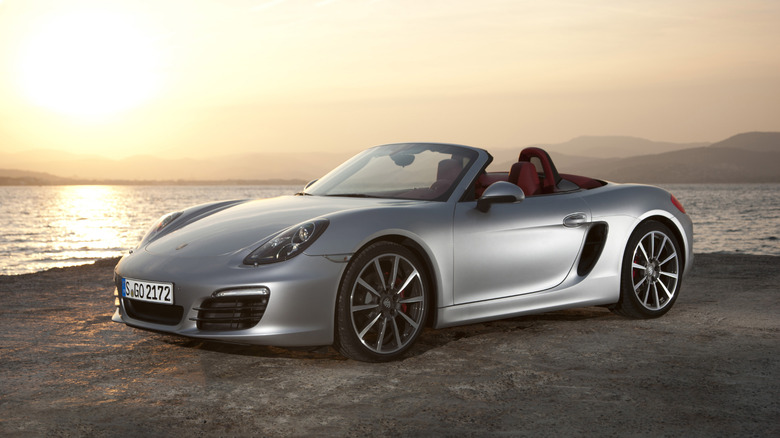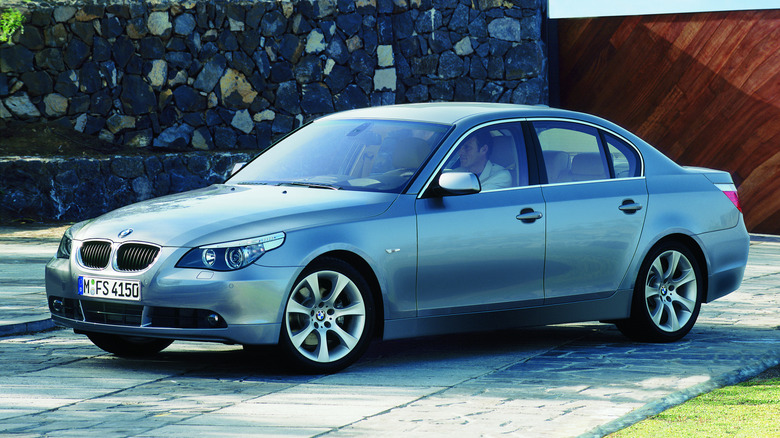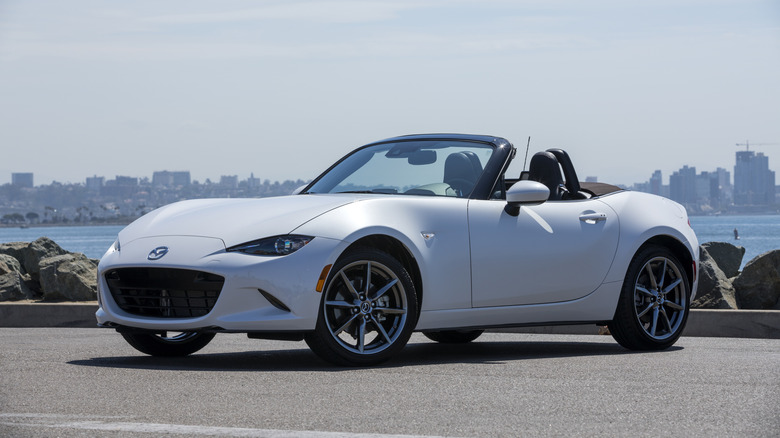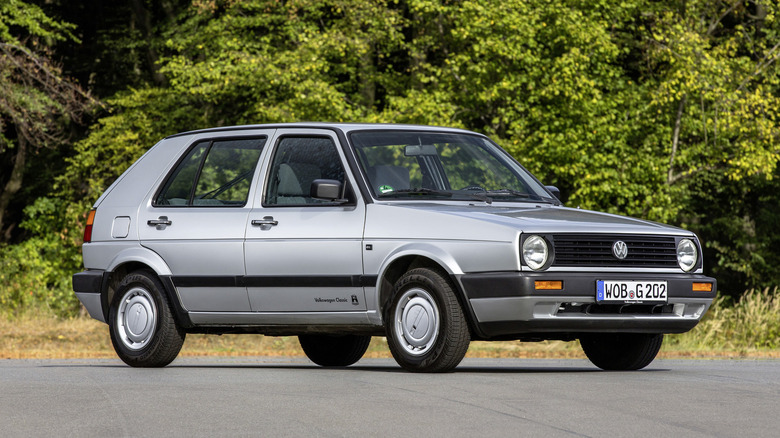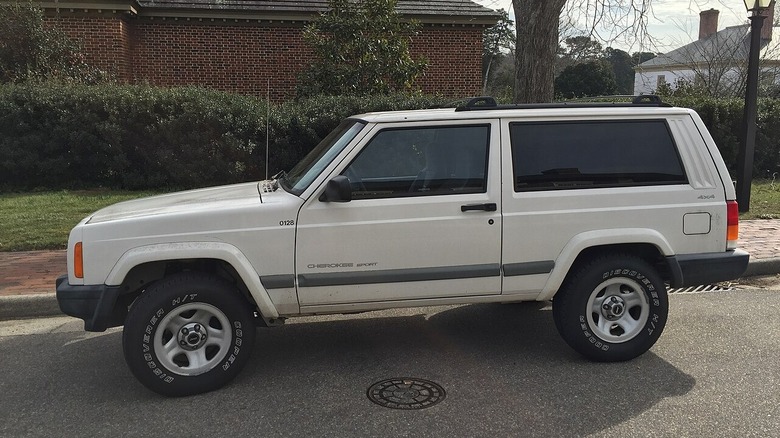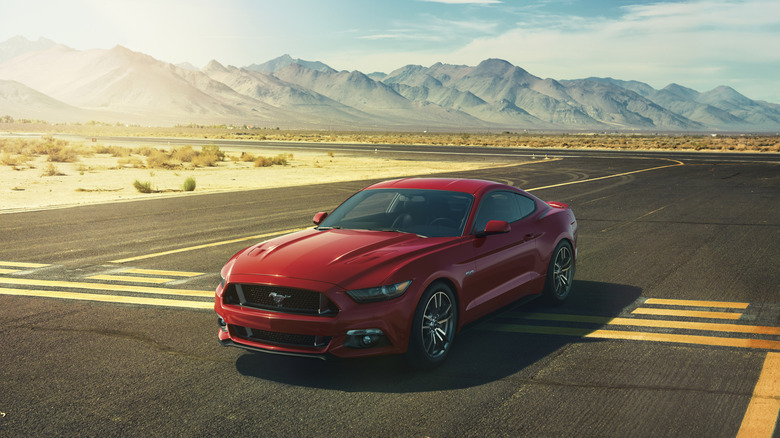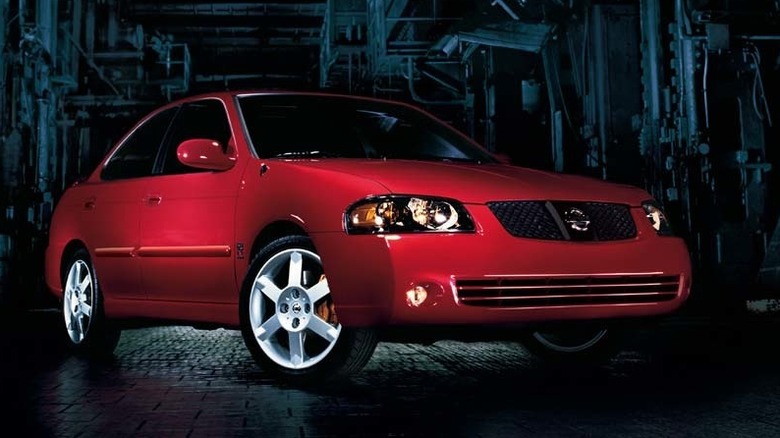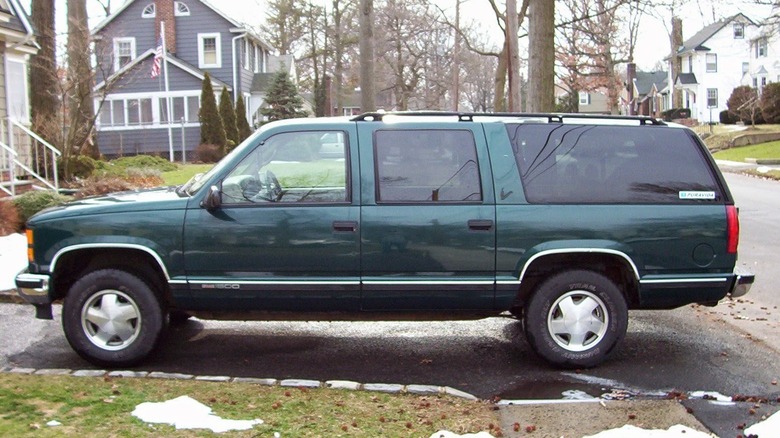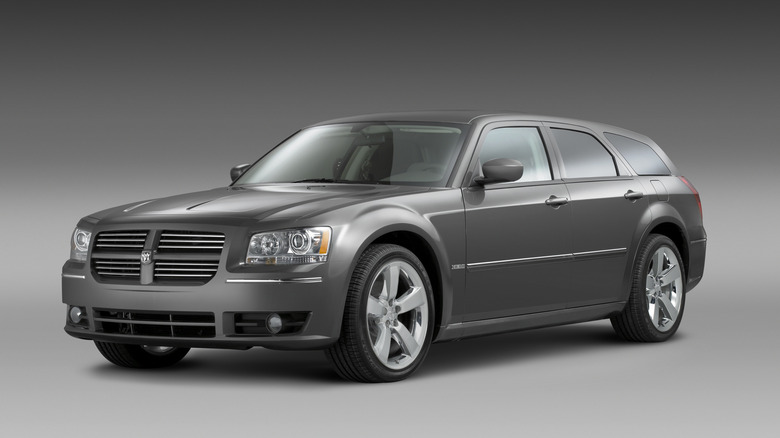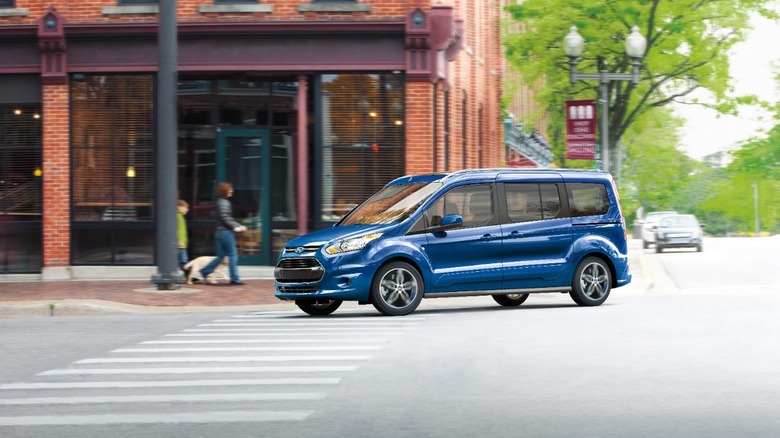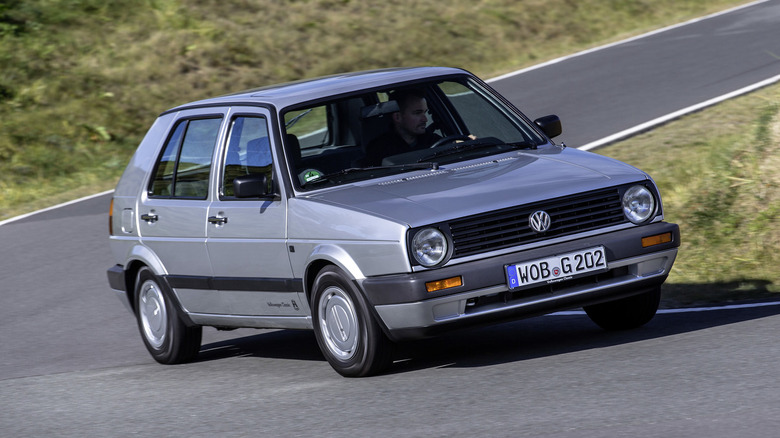10 Cars That Are Surprisingly Difficult To Drive
Factors that make a car difficult to drive fall into something of a subjective gray area. For a recently licensed teenager who learned to drive with an automatic, attempting to operate a manual would be obviously difficult. But for the seasoned driver who feels comfortable piloting most anything with four wheels, claiming a clutch is too stiff or the steering a bit numb falls into the preference bucket.
For this discussion of 10 cars that are surprisingly difficult to drive, I'm leanung heavily on my, uh, almost 30 years of driving experience (I really wanted that to be 20 years), as well as my time spent covering the auto industry. Driving for me is fun, and in many ways, the harder a vehicle is to master, the better. So whenever I've been offered the chance to drive something new and unusual, exotic or pedestrian, I've jumped at the chance. Mario Andretti I am not, but I know my way around.
For the most part, the vehicles described below come from the pre-computerized-everything era. For instance, Toyota's RAV4 was one of the hottest-selling vehicles in America in 2024. It's also remarkably easy to drive with its eight-speed automatic, gently powered front wheels, and litany of electronic nannies ensuring you, and it, stay in your lane. This is a far cry from the zany torque steer of the 2002 Nissan Sentra SE-R Spec V. That car was difficult to drive, and it's not the only one.
Porsche Boxster S (981)
Believe me when I tell you that I know a Porsche Boxster S is the seeming antithesis of a difficult-to-drive car, in the right context. The right context being the enthusiast driver who appreciates the mechanical wonder of a Porsche flat-six clickety-clacking away out back while you row the sweet six-speed gearbox. However, that gearbox houses a clutch that requires legs of steel. And driving this particular Porsche, with the top up, can make any driver sweat, as I learned during a rental via peer-to-peer car sharing platform Turo.
On the transmission front, more than one other 981 owner has noted the effort required to operate it properly. Some might say it's part of the experience, or encourage not skipping leg day, but complaints of knee and ankle pain, as well as general stiffness, do point to a common thread. Would I trade the Boxster S with a stick for an automatic? Absolutely not. But the stiff spring may give you pause, especially in combination with the car's other notably difficult aspect.
If you're traversing congested highways, like the I-5 between San Diego and Los Angeles, with the convertible top raised, the visibility over your shoulder and out the back window is practically nil. That's not preferable, especially when those roads are unfamiliar, but sometimes necessary. The time I spent doing so felt more like a game of Frogger, given the numbers of giant-sized SUVs on the road, than a day of blissful mid-engine Porsche joy.
BMW 5-Series (E60)
I clearly remember the day my dad brought home his 2007 BMW 530i. After many years driving Acuras with their crisp six-speed manuals, he had taken the German plunge to see what all the hype was about. On paper, this was a sweet ride. The renowned N52 straight-six engine, 255 hp, 220 lb-ft of torque, rear-wheel drive, a six-speed manual, and BMW's reputation for building the best sports sedan in the business.
Needless to say, I was stoked to test it out. I then promptly fumbled the 1-2 shift. Second to third was better, but not great. Really, I struggled to execute smooth shifts, up or down, the whole time with that E60. Going into this drive, I had a solid 15 years of manual transmission driving experience under my belt, so it wasn't a matter of learning how to operate a clutch. You might think that the handful of times I drove the car are not enough to say it's difficult to drive, and normally I'd agree.
However, my dad owned the car for six years and claimed he could never get it right. I found the clutch takeup to be herky-jerky, and the bite point difficult to identify. Apparently so did he, along with many owners on the internet. In fact, shifting so rough it makes the vehicle difficult to drive smoothly is a apparently common problem with the E60 5 series, so it's not just us. I rest my case.
Mazda MX-5 Miata (ND)
The truth about the Mazda Miata, at least the current ND generation, is that under normal driving conditions, it's easy and fun to drive. This car is an accolade magnet. It's garnered 19 Car and Driver 10Best wins over the years — in our review of the 2023 model we called it "a recipe for happiness." However, for inexperienced drivers, it's worth remembering that the Miata is, and always has been, a RWD sports car that will oversteer with ease.
This is something I learned while executing a tight, but non-aggressive U-turn on a dry city street several months back. The dang thing came around on me! I caught it and all was well, but for those unaccustomed to this kind of vehicle behavior, things could end differently. While some folks have had a similar experience, suddenly oversteering in seemingly benign conditions, more Miata owners point to spinning out while racing.
Of course, racing on a track and driving down the street are two different things. But, arguably, when piloting Mazda's little sports car, you may find it hard to suppress a need for speed. All to say, the ND Miata may "only" make 181 hp and 151 lb-ft of torque, but it also only weighs 2,341 pounds. For perspective, the affordable Subaru BRZ is 457 pounds heavier. Put it together and you have a car that can oversteer without much prodding, which would certainly qualify as driving difficulty no matter your experience level.
Volkswagen Golf (Mk2)
Going back in time to 1985, we enter the realm of oldies but goodies that make a 2025 Toyota RAV4 feel like a Rolls-Royce in comparison. I give you the second-gen Volkswagen Golf. Specifically, a 1985 Golf, with its hilariously weak single overhead cam inline-four producing a gutless 85 hp. However, what the little hatchback lacked in power, it made up for with lively handling and German character.
At least that's what my admittedly foggy memory is serving up as it is pulling from the 1997 archives. That was the year I passed my driving test and learned to drive a stick using my sister's hand-me-down 1985 Golf. Already having driven something forgettable, with an automatic, to earn my license, I knew something was amiss the first time I attempted to back the Golf out of the driveway. As in, "Hey Dad, what's wrong with this steering wheel?"
If you've never driven a car without power steering, it's hard to imagine how difficult such a car is to drive. Forget your single-digit spinning of that RAV4 wheel. The unassisted 1985 Golf is a 10-and-2 two-handed affair sir. My pencil-thin teenage forearms were no doubt throbbing from the effort. As bonus points for difficulty, the Golf had hand-crank windows. Though I pine nostalgically for them today, working those babies up and down at old-school Garden State Parkway toll booths while fumbling with the shifter and managing the steering wheel was challenging.
Jeep Cherokee (XJ)
The black 1991 Jeep Cherokee with two doors and five speeds that accompanied me through my college years remains an all-time favorite. Unlike the wimpy Golf, that Jeep was all brawn. Sporting the beloved 4.0-liter inline-six that loved to leak through the PCV valve, but never left me stranded, it offered 190 hp and 225 lb-ft of torque. Heady figures coming off the old Golf, but controlling all that juice was an exercise in hilarity.
The shift knob was connected to a bent lever measuring six feet, if memory serves. The clutch pedal travel was approximately half that distance. And the clutch itself required a lot of effort to engage, which made for quite the leg workout. But that's only part of the difficult-to-drive story.
Once you had all the pieces in place, actually finding the gear required a hard-to-define combination of practice and luck. Was I in second or forth? With such a sloppy shifter, it was hard to be sure.
In retrospect, the Cherokee offered a valuable lesson in learning to drive by listening to the engine. The tach helped too. Adding difficulty — or what some might call fun — was all that power being sent to the rear wheels. With a curb weight below 3,000 pounds , that Cherokee was squirrelly in slick conditions without 4WD engaged and by extension, a difficult car to master. I loved it.
Ford Mustang GT (S550)
I would argue any high-powered RWD car is difficult to drive, if you don't know what you're doing. In the context of the novice, or the overconfident driver, a Ford Mustang GT from most any generation can be a handful. ust Google "Cars and Coffee Mustang fails" for video proof that Ford's pony car lives up to its name. Today, however, I'm pointing fingers specifically at the S550 series, a car I've enjoyed time behind the wheel of in GT guise.
The reason Ford's modern muscle car can be difficult to drive, aside from how easily it oversteers, is that it feel like it's asking you to go for it. Firing up the 2015 convertible I drove, the 5.0-liter Coyote engine rumbles and growls. 435 hp and 400 lb-ft of torque is a serious amount of power even today, and with the top down, the sound at idle seems like an invitation. "Go ahead," the Coyote whispers, "give it some gas."
Do so and you'll enjoy a firm shove into the seatback as the peerless sound and fury of a Ford 5.0-liter V8 unloads. It's one thing to do this in a straight line, on a dry road, and with the understanding that you are piloting a four-wheeled missile. Swap those factors for something twisty and wet, and the S550 Mustang GT can quickly become a difficult car to drive for the uninitiated.
Nissan Sentra SE-R Spec V (B15)
Circa 2002, my brother was the owner of a new Nissan Sentra SE-R Spec V, replete with a six-speed stick and a 2.5-liter four-cylinder engine making 180 hp and 180 lb-ft of torque. I remember it as a riot of a car, and one with a steering wheel that was harder to keep in hand than a greased watermelon — under wide-open throttle that is, with torque steer in full effect.
Torque steer has been largely banished from the current FWD automotive lexicon. The reasons are too long to detail here, but fire breathers like the current Civic Type R employ tricks like a dual-axis front suspension to combat it. Not so for the B15 SE-R Spec V. 180 hp pales in comparison to modern sport compacts, but with the Sentra's 2,800-pound curb weight, applying that much force to the front wheels was a recipe for torque-steer madness. And wild steering wheel antics were not the only difficult aspect of driving these cars.
Putting the six-speed manual into reverse required sliding a collar up the shifter to unlock the gate. Even familiarity with this feature did not lessen how challenging it could be to get the action right. For those unaware, like my brother's roommate who tried to move the car, you could simply slam through the lockout mechanism to back it up — and break it in the process. Turns out, this was kind of a thing for these SE-Rs and certainly something that makes for difficult driving.
Chevrolet Suburban (GMT400)
A 30-year-old Chevy Suburban is seemingly easy to drive, with its automatic transmission, lumbering V8 powertrain, and ability to go over or through anything in its way. But the devil is in the details, and the 1995 Suburban I inherited once its family car duty was complete had many important details. Like the on-center steering feel, or lack thereof. A steering wheel that floats around in the vicinity of 12 o'clock does not inspire confidence, no matter the car.
Looking back, some of that looseness could be chalked up to the many miles accrued in its service to a family with three kids. But, it's also fair to point out that the Suburban was basically a Silverado with a fixed cargo bed and circa 1995, GM didn't appear to be doing a whole lot else when it came to building these behemoths. Which brings up a complementary challenge that came with driving these old beasts. Their size.
A 2025 Suburban is festooned with cameras and sensors beeping and flashing to let you know if you're about to crumple whatever was foolish enough to park behind you. Back in 1995, you had to have a feel for maneuvering your land yacht, which sometimes meant actually feeling other cars' bumpers to determine available space. Parallel parking remains the domain of experts, but 30 years ago, with no computerized guidance, putting that Suburban between two cars with a numb steering wheel was definitely difficult.
Dodge Magnum R/T (2005)
Dodge hit an enthusiast home run with the Magnum wagon from the middle 2000s. Long, low, and square-edged, it had presence. SRT-8 models rightfully owned the spotlight then, and now, thanks in large part to its thumping 6.1-liter powerplant. However, the R/T model driven by my mom was not exactly light on power with its 5.7-liter HEMI making 340 hp and a stout 390 lb-ft of torque. AWD was available, but hers was of the RWD variety.
It felt fast, and Car and Driver confirmed this in a period test, clocking the "Wagnum" at 5.8 seconds in the 0-60 run. All of this would seemingly add up to an ideal car for the sleeper station wagon aficionado, which the Magnum mostly was. Except for the assorted difficulties that came with driving it. Like the steering wheel dead band that seemed to stretch between 10 and 2. That much power is exciting, but less so when it feels like the wheels aren't connected to the steering rack.
Then there was the matter of visibility. All that rakish sheet metal gave the Magnum great lines, but the high belt line made for small windows and the rear roofline was sharply angled. For such a long car, clear sight lines out the back and rear side windows are key to stress-free driving. Lack of a backup camera and terrible sight lines are difficult enough. Factor in a fat powerband with terrible steering and you have the perfect recipe for a car that is tough to drive confidently.
Ford Transit Connect (2014)
The 10-year-old Ford Transit Connect that has lived in my driveway since it was new is an interesting exercise in the surprising difficulties that can arise with driving a vehicle that seems as simple as they come. It is certainly a breeze around town where the wheezing four-cylinder engine happily putts about without complaint. And the FWD layout means no oversteer challenge, not that it has enough power to warrant such concerns.
However, get this florist-delivery-vehicle-turned-passenger-minivan on the highway and things start to change. Passing requires sound judgment and a careful application of throttle. Were you to, say, suddenly stand on the gas to pass a slow-moving semi, the transmission will lurch and slam to jarring effect. It's not great at freeway speeds. It prefers a long runway of steady acceleration and then a firm shove to get up and around other vehicles.
This is not necessarily difficult, but it is also not immediately apparent. Of notable challenge is navigating this mini-minivan up and down mountainous roads, like the Monarch Pass in Colorado, for example. Going up, the transmission will hold a gear and rev to the heavens, until you back off and let it think. Coming down, the brakes are the opposite of confidence-inspiring and that transmission, it hits hard. Coupled with the underpowered engine, the Ford Transit Connect can — under the right circumstances — be rather difficult to drive.
Methodology
To compile this list of cars that are difficult to drive, I dug through my memory to find vehicles that challenged me. As proof of my qualifications on this largely subjective subject, I offer my nearly 30 years of experience behind the wheel and my background in vehicle dynamics engineering. To verify any hazy memories, I looked to the internet for other owners reporting similar challenges and family members who helped confirm my thoughts as needed.

